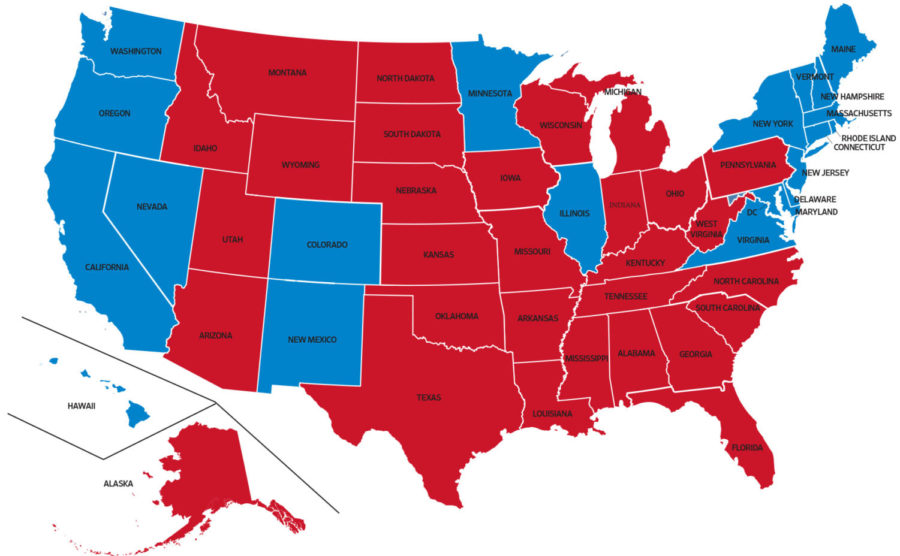AP Gov: What is the Electoral College?
September 14, 2020
Editor’s Note: The Iowa State Daily introduces the political series AP Gov. to provide voters with crucial information leading up to the 2020 election.
The Electoral College is a widely known and heavily debated topic, as it essentially decides the outcomes of presidential elections.
The Electoral College was originally created by the Founding Fathers to help uneducated citizens decide who the next president would be. It’s still used in that way today, along with the popular vote, to decide who the next president will be.
The Electoral College was created in 1787 during the Constitutional Convention. The Founding Fathers believed citizens were uneducated and could not choose a quality president. Another reason for the creation of the Electoral College was to avoid having mob rule, according to Mack Shelley, Iowa State professor and chair of the political science department.
The Electoral College is composed of elected officials from each state. Each state is assigned a number of votes, which corresponds with the population of the state. Each state has two votes for its two U.S. senators and one additional vote for each member the state has in the House of Representatives. For instance, California has a total of 55 electoral votes while Iowa has six.
“Each state gets a certain amount of votes based on its geographical location and population,” Shelley said.
In modern elections, the first candidate to get to 270 of the 538 total electoral votes wins the election.
The Electoral College vote takes place mid-December when the electors meet in their state, meaning the popular vote is announced to voters on the night of the general election but the official presidential winner is not announced until after the Electoral College votes.
Five times in history, presidential candidates have won the popular vote but lost the Electoral College. Many remember the 2016 election during which Hillary Clinton won the popular vote by over 2 million votes but Donald Trump won the Electoral College vote by 77 votes, making him the 45th president.
Other years when the popular-vote winner lost were 1824, 1876, 1888 and 2000.
The Constitution does not require the electors to follow their state’s popular vote, but many state laws do. Some electors in the past have challenged those laws and voted against the popular vote. In July 2020, the Supreme Court ruled that if the state requires its electors to vote with the popular vote of their state, it is constitutional.
Some states, such as Maine and Nebraska, can split votes, Shelley said.
In the 2016 election, Clinton won Maine, but Trump did earn one electoral vote by winning the popular vote in the 2nd Congressional District.
Swing states such as Iowa that can reasonably be won by either the Democratic or Republican candidate are campaigned in more than states like California that typically vote Democrat.
“The Electoral College plays a big part in the strategy behind campaigning for candidates, which states they prioritize in visiting,” said Abigail Meehan, communications director for the Iowa State College Democrats and junior in political science.
If Iowa were to become more predictable in how they vote and identify with a particular party, such as how Kansas is a red state, Iowa would lose its “swing state” status, and candidates would be less likely to campaign in Iowa for the general election, said Dirk Deam, teaching professor in political science.
“If we didn’t have the Electoral College, smaller states would receive very little campaigning or any attention at all from candidates, which might make voters less likely to vote,” Meehan said.

















